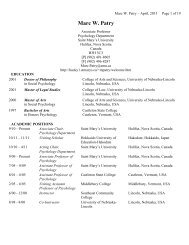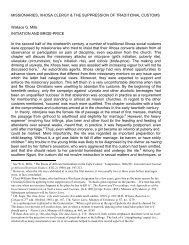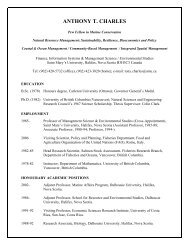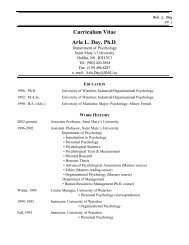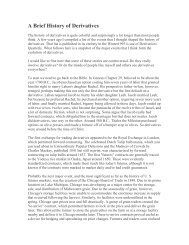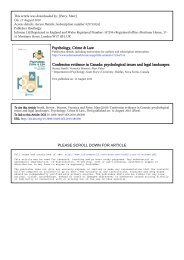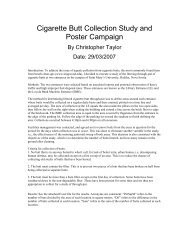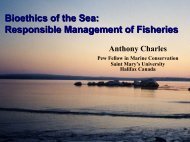Social, Economic and Cultural Overview and Assessment for Ocean ...
Social, Economic and Cultural Overview and Assessment for Ocean ...
Social, Economic and Cultural Overview and Assessment for Ocean ...
Create successful ePaper yourself
Turn your PDF publications into a flip-book with our unique Google optimized e-Paper software.
3.1.4 Data Analysis<br />
Within the case studies, several different analytical methods were utilized to evaluate the data,<br />
including but not limited to:<br />
• <strong>Economic</strong> evaluation models that incorporate both boundary analysis <strong>and</strong> risk models<br />
to determine the impacts to communities <strong>and</strong> industries by the different alternatives<br />
<strong>and</strong> scenarios being proposed.<br />
• Total economic valuation models <strong>and</strong> assessments (specific to Australia)<br />
• Mapping <strong>and</strong> GIS analysis supporting the above analysis.<br />
• Operational costs <strong>and</strong> the complexity of navigating jurisdictional frameworks. For<br />
example, Channel Isl<strong>and</strong> <strong>and</strong> Tortugas Ecological Reserve case studies noted the<br />
implications of complex jurisdictional frameworks associated with conducting a<br />
boundary analysis of the proposed marine park boundaries.<br />
• The Port Stephens <strong>and</strong> Great Barrier Reef case studies discussed the costs to<br />
government <strong>for</strong> establishing the marine park <strong>and</strong> the implications of purchasing<br />
commercial fishing business buy-backs.<br />
3.1.5 Observations on data sources <strong>and</strong> methodologies<br />
Based on the case studies reviewed, the following points arose:<br />
• Baseline studies used mainly secondary data to first scope out the context of the study<br />
(Great North Sea, Baltic Sea <strong>and</strong> Scottish Coast). Potential benefits of this approach<br />
are the reduced expenses <strong>and</strong>, in some cases, shorter research timeframes.<br />
• Most assessment <strong>and</strong> evaluation studies used both primary <strong>and</strong> secondary data (e.g.,<br />
South-East Marine Region, Cod Grounds <strong>and</strong> North West Forest). These studies also<br />
tended to be more complex <strong>and</strong> required longer timeframes, <strong>and</strong> perhaps involved<br />
additional human <strong>and</strong> financial resources.<br />
• Multi-country <strong>and</strong> regional planning assessments were reliant on aggregated data from<br />
national sources, which required the collaboration <strong>and</strong> cooperation of the participating<br />
in-country offices. Potential issues associated with this approach include language <strong>and</strong><br />
translation challenges, differences in methodologies, confidentiality <strong>and</strong> official<br />
clearance, incorporating “grey literature” (sourcing <strong>and</strong> incorporating un-published<br />
reports <strong>and</strong> papers) <strong>and</strong> intellectual property rights (indigenous communities). This<br />
13



